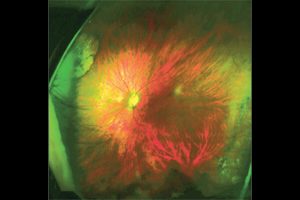The function of the eye is to transmit perceptions of the outside world. We use it all the time, as long as we’re awake, and when we dream, we do so using visual imagery. This organ -one of the most complex organs of the body- is found within a protective space beneath the cranium called the eye socket. It automatically focuses in on whatever enters its field of vision. It captures light and turns it into a beam of thousands of nerve impulses.
This organ can reach up to 2.5 centimeters in diameter and it can move, because it has muscles. Its structure is made up of a solid wall that has three layers of tissue:
The outermost layer acts as the ocular skeleton and it contains two structures:
– The sclerotic coat -the white part of the eye- is made up of a collagen tissue, and its inner portion, called choroid, supplies nutrients to the eye and contains a layer of dark pigment called melamine, the function of which is to absorb excess light and maintain a steady temperature.
– The cornea is a curved, transparent layer made of a tissue that absorbs oxygen directly from the air or from tears. It is the first of the two lenses that let light into the eye. The other one is the crystalline lens.
After the cornea comes the iris, a muscular disc whose pigment gives the eye color. In addition, it acts as a diaphragm, controlling the amount of light that passes on to the retina.
At the center we have the pupil, an opening that dilates or contracts. This is where light passes through to the back of the eye. After the pupil comes the crystalline lens, an elastic, transparent lens that is supported by a muscular structure made up of 70 thin ligaments. Its function is to bring the images captured by the eye into focus.
The eye also has two fluids: one is thick and transparent; it’s called vitreous humor. The other is more watery; the aqueous humor. Both of them give this organ its spherical shape, in addition to supporting it and nourishing the ocular skeleton.
Humans have binocular vision. This means our eyes face forward, which allows for a field of vision that spans approximately 180º horizontally and 130º vertically (70º down and 60º up).








 Muere Evita
Muere Evita